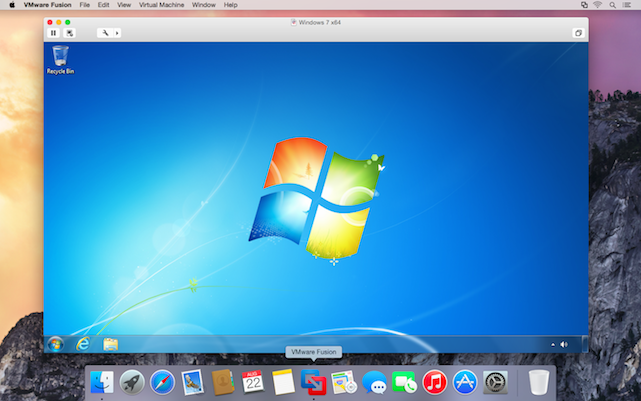

- Make a yosemite vmware image mac os x#
- Make a yosemite vmware image install#
- Make a yosemite vmware image full#
The next machine we will make will be a clean template for the Server, so name this full clone something like YTCleanServer. Keep in mind that at this stage your YTClean machine is your base model. Right Click on the machine in the Virtual Machine Library and select Create Full Clone.Close out of your machine once it has shut down (Mine is called YTClean).
Make a yosemite vmware image install#
You will notice that you now have your VMWare Share Folders on the desktop, throw your Install VMWare Tools.pkg from the desktop into there for later on and you can then get rid of it from the desktop. Once the machine has booted up again, log in.When you’ve clicked finish, you’ll be asked to convert virtual disk to newer format, select keep existing format and click Ok on virtual machine settings.
Make a yosemite vmware image mac os x#

Before you start the install, while you are here you might as well copy the Install VMWare Tools.pkg to your desktop for use later when building VMs using deploy studio.Select Virtual Machine from the menu bar and then select Install VMWare Tools Once you are logged on to the Desktop, the first thing you want to do is install the VM Tools otherwise the VM will hang on reboot.For the purposes of the virtual lab, I have decided that I am going to use the same password for everything. Wait for the VM to restart and complete the welcome prompts.Complete the installation as per normal.At the initial setup go into disk utility and expand the partition from 40GB to the 60GB that it was changed to.Increase the size of the HDD from 40GB to 60GB (or whatever you want).This will create a NAT interface for the adapter. Choose the second adapter that was added afterwards and connect it using the Internet Sharing option or “Share with my Mac”.Connect the first adapter to the internal or custom network created earlier and generate a mac address.Click Add Device and chuck on another Network Adapter.I am just using the defaults and will bump it up for the Server machine. Check that the processors and ram are good enough.I have a folder on the local machine where I keep any downloaded installers or other software images because after some initial setup I remove the VMs from the internet. Enable shared folders and add a folder from the local machine.Once it finishes building go into the settings and set the following.Choose “Customize Settings” to choose where to store the new VM.Select “Use another disc or disc image”.Make sure that all three boxes are not ticked as below.I have further confirmed that this DVD ISO will work to install OSX 10.10 on valid VMware ESXi installations with version 5. In my case I have created a new network called vmnet4 Thanks for the solution, tywebb13I took your commands and altered them for a script that one can simply place INSIDE the root folder of the Install OS X Yosemite.app folder and run from that context to generate an ISO on the desktop.Click the plus to add a new custom interface.Steps Configure internal VMWare virtual test network Latest Yosemite Installer from the App Store.VMWare Fusion 7 (at time of writing I am using the trial ).I am creating my initial VMWare image that I will base all of my environment virtualisation off of so that I do not need to keep recreating VMs from scratch.


 0 kommentar(er)
0 kommentar(er)
